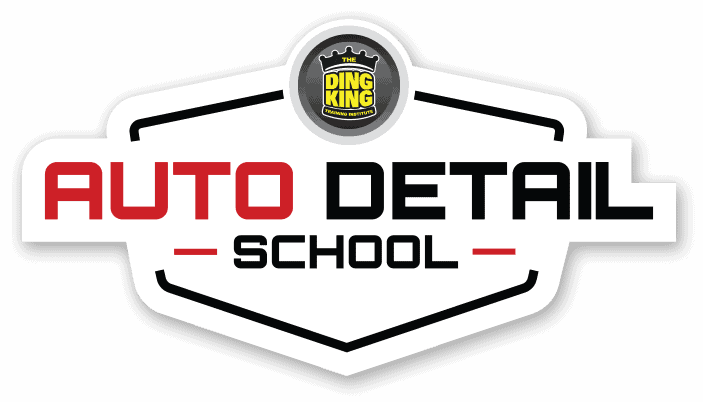Applying CK1 Ceramic Coating requires careful preparation and attention to detail. Here is a step-by-step guide on how to apply CK1 Ceramic Coating:
- Preparing the Surface:
- Thoroughly wash and dry the vehicle to remove any dirt, dust, or contaminants.
- Clay bar the surface to eliminate any embedded contaminants and ensure a smooth surface.
- If necessary, perform paint correction to remove any swirl marks, scratches, or imperfections.
- Masking and Taping:
- Use painter’s tape and plastic sheeting to mask off areas that you do not want the ceramic coating to come into contact with, such as rubber trims, windows, and plastic parts.
- Application Process:
- Put on nitrile gloves to protect your hands during the application process.
- Apply a few drops of CK1 Ceramic Coating onto the provided applicator pad or microfiber applicator.
- Work on one panel at a time, starting with a small section.
- Apply the coating in straight, even motions, ensuring full coverage of the surface.
- Use a cross-hatch pattern to ensure complete coverage and to avoid missing any spots.
- Apply the coating in thin layers to prevent excessive buildup.
- Curing Time:
- Allow the CK1 Ceramic Coating to cure for the recommended time specified by the manufacturer. This typically ranges from 1 to 5 minutes.
- During this curing time, the coating will bond to the surface and create a protective layer.
- Removal and Buffing:
- After the curing time has elapsed, use a clean, lint-free microfiber cloth to gently wipe off any excess coating.
- Buff the surface with a separate clean microfiber cloth to ensure a smooth, glossy finish.
- Inspect the panel for any remaining residue or streaks and remove them with additional buffing if necessary.
- Repeat the Process:
- Continue applying CK1 Ceramic Coating following the same steps on each panel of the vehicle until the entire surface is coated.
- Post-Application Care:
- After applying CK1 Ceramic Coating, it is recommended to avoid washing or exposing the vehicle to water or extreme weather conditions for the first 24-48 hours to allow the coating to fully cure.
- Regularly maintain the coating by washing the vehicle with pH-neutral car shampoo and using a ceramic coating-specific maintenance spray to enhance its longevity.
Remember to carefully read and follow the specific instructions provided by the manufacturer of CK1 Ceramic Coating, as application techniques and curing times may vary.
Hailstorms are a frequent occurrence in many regions, often causing extensive damage to vehicles with quarter to golf-ball-sized dents on every panel. Recognizing the need for efficient restoration, insurance companies globally endorse Paintless Dent Repair (PDR) as the “Preferred Method” for hail damage repair. At The Ding King, we offer specialized Hail Repair Training and Paintless Dent Repair Courses, preparing individuals to become skilled PDR technicians and tap into the burgeoning auto industry market.
Opportunity in Dallas, TX: We are currently seeking proficient PDR Hail Technicians to join our Hail Squad in Dallas, TX. For more details, please contact [email protected].
Benefits of Choosing PDR: To avoid traditional body shops and preserve your vehicle’s value, our high-quality PDR process offers several advantages:
- Cost-Effectiveness: PDR is a more cost-effective option compared to traditional methods, eliminating the need for extensive bodywork or repainting. Skilled technicians can manipulate the metal from behind the panel, restoring it to its original shape without costly materials and labor.
- Time-Efficiency: PDR is a quicker process, avoiding the use of harmful chemicals, body filler, or lengthy paint curing times. This results in faster turnaround times, getting vehicles back on the road promptly while saving money on labor costs.
- Preservation of Original Paint: PDR is a non-invasive technique that preserves the vehicle’s original factory paint finish, eliminating the risk of color mismatches or overspray. This ensures the vehicle maintains its original appearance and resale value.
- Environmentally Friendly: PDR is considered a more environmentally friendly option as it does not involve the use of fillers, chemicals, or paint. The specialized tools used in PDR make it a greener choice for hail damage repair.
- Retention of Value and Appearance: By preserving the original paint and finish, PDR helps maintain the vehicle’s value. Traditional repairs involving repainting can potentially lower the vehicle’s value, making PDR the preferred choice for both car owners and insurance companies.
Conclusion: The PDR process, utilizing specialized tools to massage dents into their original shape without harsh chemicals, offers a cost-effective, time-efficient, and environmentally friendly solution for hail damage repair. Its ability to preserve the original paint and retain the value of the vehicle makes PDR the preferred choice for both car owners and insurance companies alike.

